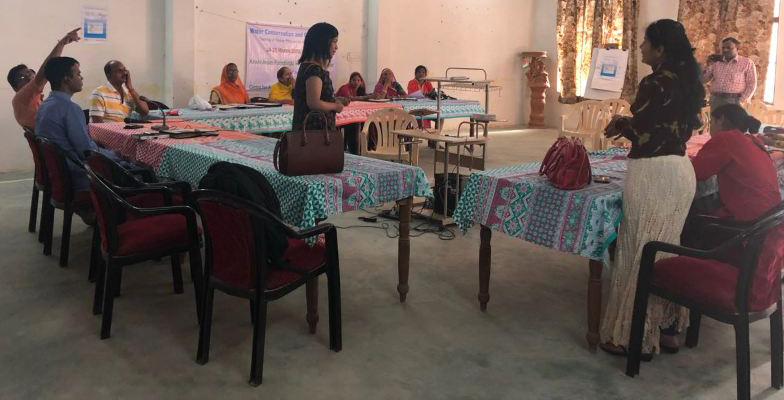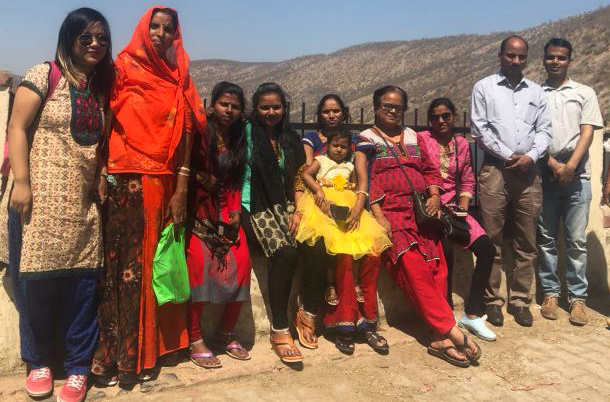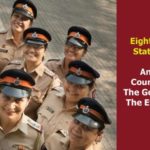From 24th March 2018 to 25th March 2018, Ms Ritika Bhatia and Ms Ishani Hazarika from our team travelled to Alwar with elected women representatives, for an exposure visit. This was a part of the Water Conservation and Climate Change project carried out in Rajasthan, in association with Hans Seidel Stiftung India, which has been a key project at Centre for Social Research since 2012.


Day 1 of the visit began with introduction of the KRAPAVIS, their contribution to the society, their working strategies and ways of implementation was being introduced by Mr. Aman Singh, Chief Coordinator/Founder. This was followed by an introduction by Ms Ritika Bhatia, Project Lead, who spoke about Centre for Social Research, its work and contribution. Next, Mr. Sandeep Dubey, Program Manager of Hanns-Seidel-Stiftung India, introduced himself at the meeting. A quick recap of the previous learnings that were held in the previous year was done by displaying the flip charts and other resource materials where the participants enthusiastically showed interest by recalling every picture that they saw. The participants who were the Elected Women Representatives were asked about their experiences and after being a part of the trainings, and after the exposure visit to Laporiya.


After the sharing of experiences, the group proceeded for the field visit. First location was the Siliserh lake, where it was seen that it was a big lake which is formed due to rainwater conservation. Second location was at Baktpura Villages. The activities that were conducted were visit to Oran: water bodies, nursery/plantation and meeting with local Sarpanch.
Here are a few observations made at Baktpura Village
1. MGNREGA had made 1/4th contribution.
2. Wells are recharged.
3. The saved water that is being seen is basically used for drinking/irrigation purpose.
4. Pumping and extraction of water is being discouraged.
5. Goat is seen as a cash economy.
6. In the hill slopes it can be seen that half moon shape digging done in the slopes to make the flow of water slow n store it to maintain the nourishment of the area in the long run.
7. At the training centre (KRAPAVIS rural campus) there was the nursery where people seeds plant, grow, water, transplant, prune, and generally care for plants, shrubs, and trees. Workers are responsible for maintaining the quality of the greenery under their care, and determine the environmental conditions necessary for optimum growth and development. They also monitor the whole process from the initial planting to harvest.
8. The nursery workers water the plants two times in summer and one time in winter.
9. Discussion on problems meeting the Sarpanch , the local people were enlightened by the participants when the Elected Women Representatives directed them the procedures and issues they can take to Sarpanch to resolve the matter.
10. No commercial activity of the plants from the nursery.
11. HSS member, CSR team planted trees in the nursery.
Third location was Binak & Bera Village. The activities that were conducted were Oran visit, watershed, plantation, meeting with local Sarpanch, community members.


Here are a few observations made at Binak & Bera Village.
1. Mostly animal husbandary
2. No electricity.
3. No health care services. If in case of emergency, then the patient is being taken on Khatiya hold by 4 people on their shoulder for almost 7km .
4. Nourishment of nearby land.
5. Drawback of Forest Right Act can be seen: Government has asked them to leave their land but the villagers didn’t vacant it. So if any public related services is being needed, the Government cannot provide them services as they are occupying the land illegally.
6. A visit to a local community was made (Mrs Uganta & Mrs Manta).
7. The local villagers stay with the wild animals around. So when any outsider or any other Government officials come they leave the wild animals out so that the outsiders won’t come and take up their land.
8. The water tank is made up of pakka construction.
9. The catchment recharges the water. It was being told that they can see the difference now and then with the catchment water recharge.
10. No Anganwadi facility.
11. No animal insurance .
12. The villager (Mrs Uganta & Mrs Manta) were not aware of the facilities that the Sarpanch can provide . So the participants who were the Elected Women Represenatatives shared their knowledge, ideas and procedures about how and what are the matters they can take to Sarpanch to resolve their requirement.
Day 2 of the exposure visit began with a field visit at Jugrawar village. The observations here were:
1. Watershed and afforestation construction seen.
2. Checking of the water table four times in a year: pre monsoon, post monsoon, winter and beginning of summer.
3. Conservation of peacock.
4. Back to KRAPAVIS, Bhura siddh Training Centre
5. Activities conducted: interaction, Documentary presentation-inspiration and commitment to the cause, victories, and challenges.
6. Topics discussed : climate change, Oran, water, livelihood , conservation & co-existence in protected areas


Mr Sandeep Dubey took the feedback session in a very interactive and exciting way, wherein he asked questions regarding the quality of the exposure visit, whether the participants found it to be beneficial, and whether they will use the learnings further in their own respective villages after the exposure visit. The participants responded in a very balanced way by being practical. They stated that while the visit was beneficial and the training was effective, they would require more assistance and support to apply the new techniques in their areas. A key learning of the discussion was the realization that there needs to be a proper understanding and a balanced discussion between human and animal behaviour.


Conclusion
The exposure visit was very beneficial and fruitful for the participants. Apart from theoretical knowledge, practical knowledge by way of exposure visits are equally important, as they can be fun and exciting. Such visits have a long lasting impact, as we saw that many of the participants recalled their learnings from the earlier exposure visit to Laporiya. It was also seen that Day 1 visit was beneficial to the participants of Abu Road & Pindwara as the techniques and areas shown were applicable to hilly and mountain areas. Day 2 visit was beneficial to the participants of Jaipur as the area and techniques shown were applicable to plain areas.




